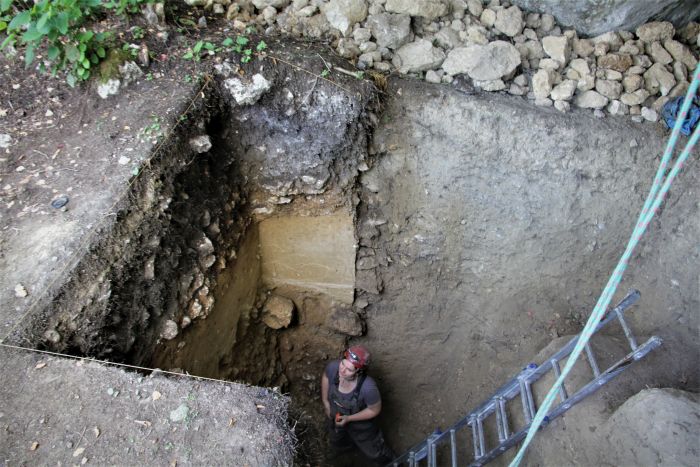
550 thousand years ago, the climate in present-day Central Europe was hostile. Because of the dizzying changes in the environment, early humans had to adapt to the new climatic conditions. And fast. Only few survived. Among them was Homo heidelbergensis.
This prehistoric primate is considered to be the oldest known species of prehistoric human. In fact, it is considered the last common ancestor between Neanderthals and Homo sapiens. Recently, a team of scientists from the University of Warsaw found remains of these primates in a cave in Poland. Along with the bones, this is what they found.
Early humans were small, stocky hunters
Homo heidelbergensis was characterized by adapting its body to the severe frosts of Central Europe. Therefore, they had small and robust bodies, which allowed them to conserve heat in their natural habitat. Despite this, it is known that they were the first humans to routinely hunt large animals.
Physically, the institution explains, they were distinguished by their broad foreheads and pronounced jaws:
"This early human species had a very large brow ridge, larger braincase, and flatter face than the earliest early human species," documents the Smithsonian National Museum of Natural History.
There is evidence that Homo heidelbergensis could control fire in primitive fireplaces, approximately 790 thousand years ago. Time and climatic conditions degraded much of their fossil remains, so it has been difficult to learn more about their diet, customs and cultural development.
weapon designers
Therefore, scientists from the University of Warsaw were surprised to find remains of this species in the mythical Tunel Wielki cave in Poland. Along with the bones, the researchers found tools that are at least 450,000 years old.
This suggests that Homo heidelbergensis was not only capable of designing them from scratch and using them, but that they passed that knowledge down from generation to generation:
"[With these remains] we can examine the limits of the survival possibilities of Homo heidelbergensis, and thus observe how it adapted to these adverse conditions," archaeologist Ma?gorzata Kot explains to Science in Poland.
Findings at Tunel Wielki shed new light on the creative and problem-solving abilities of this ancient human species. Researchers were surprised, Science Alert reports, that Homo heidelbergensis used the caves for shelter, because they weren't the best place to camp.
However, it seems that the fires promoted these cold and damp places to become comfortable homes for them. From the blows on the tools, it is known that it was a technique shared among other species of primitive humans, more than half a million years ago. (Text and photo: National Geographic)